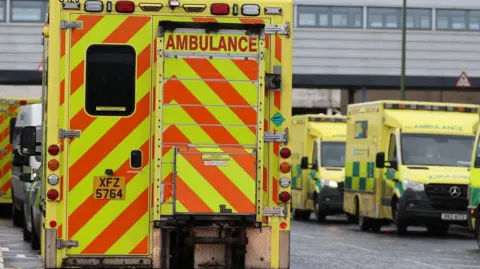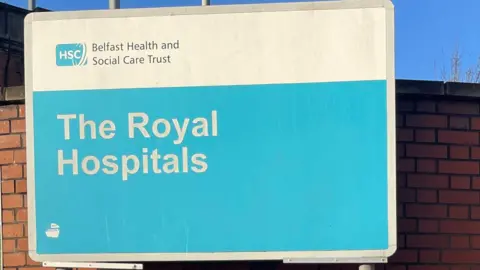Ambulance Service apology over missing response target
 PA Media
PA MediaThe Northern Ireland Ambulance Service (NIAS) failed to meet its mean targets for arriving at life threatening emergencies in the whole of 2023, according to the latest figures.
The service said it has "insufficient operational staff to meet the level of demand" and it apologised to patients for "prolonged waits".
The targets mean that ambulances must respond to category one calls within eight minutes on average and should attend 90% of category one calls within 15 minutes.
The figures also showed the number of people waiting more than 12 hours in emergency departments jumped significantly.
There were about 45,000 patients waiting for more than 12 hours in 2019, with that number rising to more than 120,000 in 2023.
 PA Media
PA MediaA spokesperson said: "NIAS has been highlighting for a number of years that we have been unable to respond to calls within these targets, and regrettably this has continued during the past year."
They added it would work with the Department of Health in relation to ambulance capacity.
Meanwhile, the Royal Victoria Hospital reported the biggest increase in people waiting more than 12 hours, rising from 6,500 to 24,000 in the past five years.
The number of people waiting for more than four hours to be treated has also increased.
There was also a rise in the number of referrals to emergency departments by GPs over the past five years.
Speaking on BBC Radio Ulster's Evening Extra, Northern Ireland Confederation for Health and Social Care (NICON) spokesperson, Mark Taylor said it was the manifestation of a system that was under "under extreme pressure"
He said: "This is a flow problem right the way through the system. Those targets are there for a reason, they are there to ensure the very best outcome "
Mr Taylor added that looking at the figures in isolation does "a disservice to the hard working paramedics and the hard working ED clinicians who are desperately trying to do their best for patients."
"We know the diagnosis, we just have to actively start treating, we can't keep having these conversations," he said.
